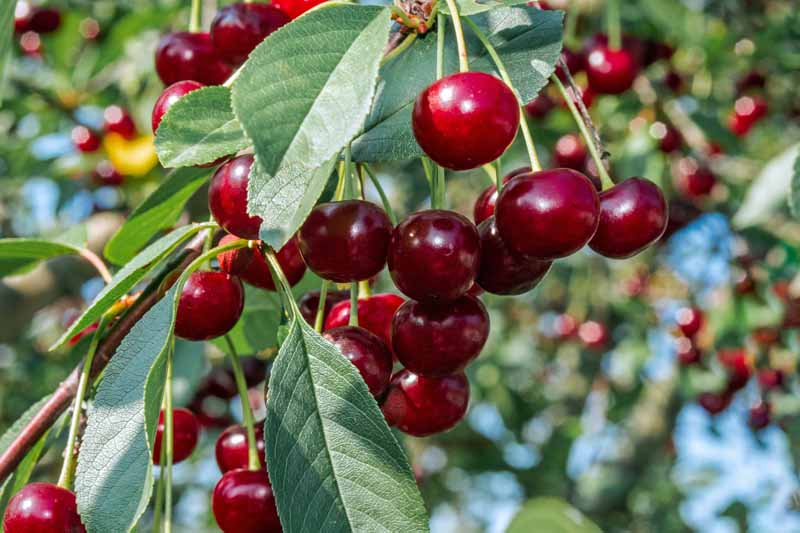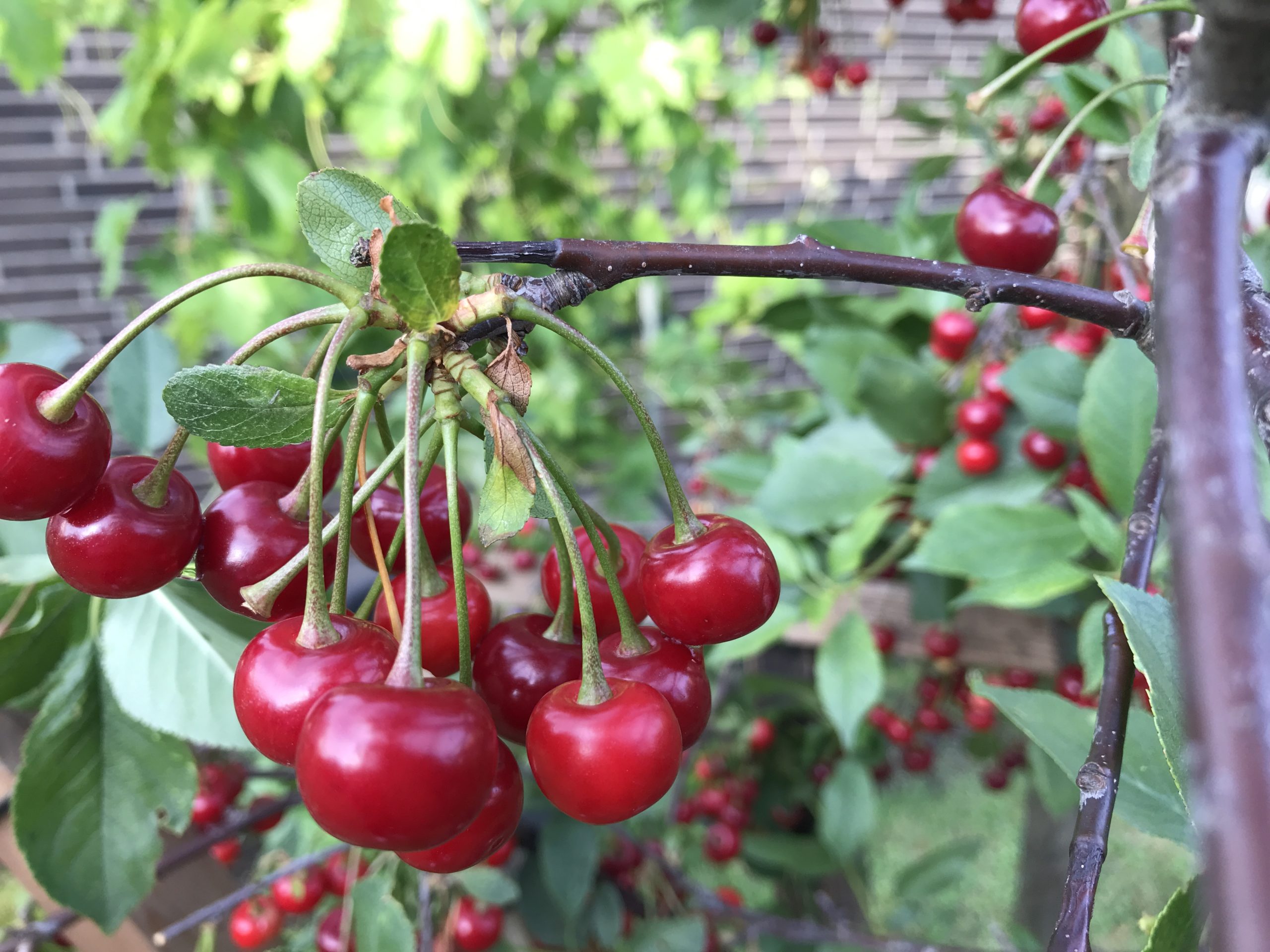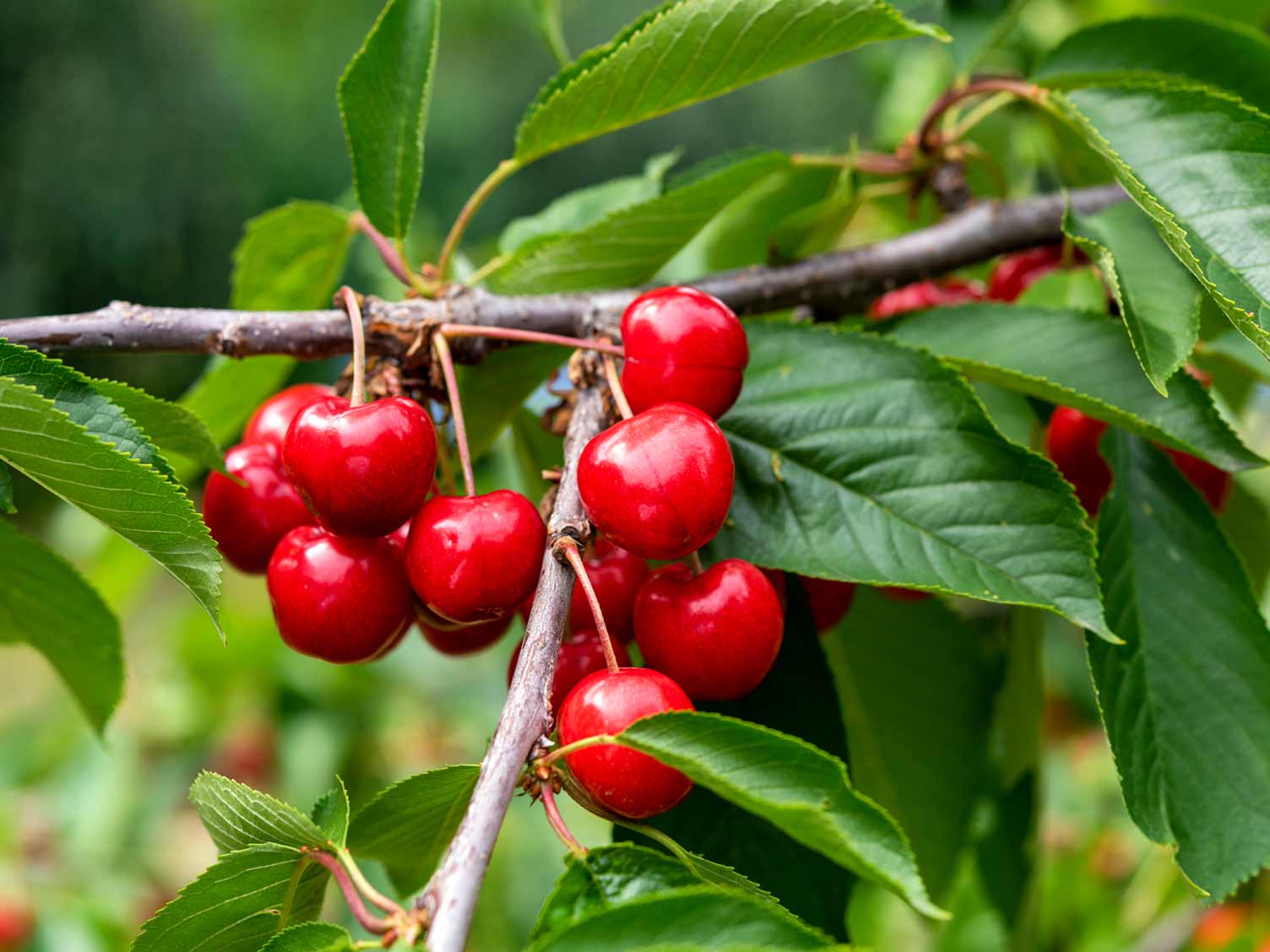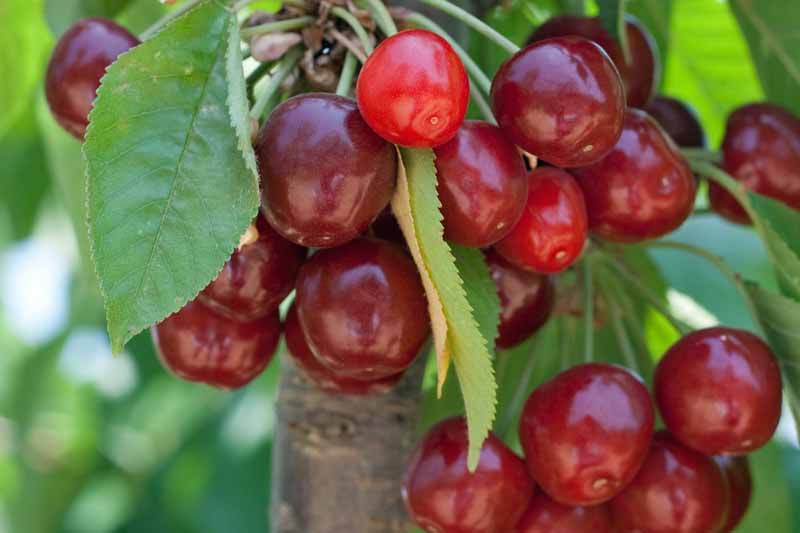Understanding Cherry Tree Climate Requirements
When deciding where to grow cherry trees, it’s essential to consider the ideal climate conditions for optimal growth and fruit production. Cherry trees typically thrive in temperate climates with moderate temperatures, adequate sunlight, and well-draining soil. The ideal temperature range for cherry trees is between 35°F and 75°F (2°C and 24°C), with average annual temperatures above 40°F (4°C). In regions with harsh winters, cherry trees may require protection from frost and freezing temperatures.
In terms of sunlight, cherry trees require full sun to produce a bountiful harvest. A minimum of six hours of direct sunlight per day is recommended, although eight hours or more is ideal. Soil quality is also essential, as cherry trees prefer well-draining, fertile soil with a pH between 6.0 and 6.8. Soil with poor drainage or inadequate nutrients can lead to reduced growth, decreased fruit production, and increased susceptibility to disease.
Cherry trees are also sensitive to extreme weather conditions, such as drought, wind, and excessive rainfall. In areas prone to drought, irrigation systems may be necessary to ensure consistent moisture levels. Windbreaks, such as rows of evergreen trees or windbreak netting, can help protect cherry trees from strong winds and reduce damage to the tree and its fruit.
By understanding the ideal climate conditions for cherry trees, growers can optimize the tree’s growth and fruit production, leading to a successful and bountiful harvest. Whether you’re growing cherry trees in a commercial orchard or a home garden, providing the right climate conditions is crucial for achieving optimal results.
Choosing the Right Region for Cherry Tree Cultivation
When it comes to growing cherry trees, the region you choose can play a significant role in the tree’s success. Cherry trees are adaptable to various climates, but they thrive best in regions with mild winters and cool, wet summers. In the United States, the ideal regions for growing cherry trees are USDA Hardiness Zones 5-8, which include states such as Washington, Oregon, Michigan, and New York.
Other countries with suitable climates for cherry tree cultivation include Canada, the United Kingdom, and Australia. In these regions, cherry trees can be grown in a variety of settings, from small home gardens to large commercial orchards. For example, the Okanagan Valley in British Columbia, Canada, is known for its ideal climate and soil conditions for growing cherry trees, with many successful orchards in the area.
In addition to considering the region’s climate, it’s also essential to think about the specific growing conditions within that region. Cherry trees prefer well-draining soil and full sun, so it’s crucial to choose a location that receives at least six hours of direct sunlight per day. By selecting the right region and growing conditions, you can set your cherry tree up for success and enjoy a bountiful harvest.
Some popular cherry tree-growing regions include the Pacific Northwest, the Great Lakes region, and the Northeast United States. These regions offer the ideal combination of climate, soil, and sunlight for growing cherry trees, making them perfect for both commercial and home growers. By understanding the best regions for growing cherry trees, you can make informed decisions about where to grow your tree and how to care for it.
How to Select the Perfect Spot in Your Yard
When deciding where to grow cherry trees in your yard, there are several factors to consider. The ideal location will provide the tree with the right amount of sunlight, soil quality, and water. Cherry trees prefer full sun to produce a bountiful harvest, so choose a location that receives at least six hours of direct sunlight per day.
Soil quality is also essential for cherry tree growth. Cherry trees prefer well-draining, fertile soil with a pH between 6.0 and 6.8. If your soil is heavy clay or sandy, you may need to amend it with organic matter such as compost or manure. Additionally, cherry trees prefer a location with good air circulation to prevent disease.
Proximity to water sources is also important when selecting a location for your cherry tree. Cherry trees require consistent moisture, especially when they’re producing fruit. However, they don’t like to be waterlogged, so make sure the location is not prone to flooding. A location with a slight slope or elevation can help prevent water from accumulating around the tree.
When preparing the soil for your cherry tree, start by removing any debris or weeds. Then, dig a hole that is twice as wide and just as deep as the tree’s root ball. Add organic matter such as compost or manure to the soil to improve its fertility and drainage. Finally, plant the tree and water it well to settle the soil.
By choosing the right location and preparing the soil properly, you can give your cherry tree the best chance to thrive. Remember to consider factors such as sunlight, soil quality, and water when deciding where to grow cherry trees in your yard.
The Importance of Soil Quality for Cherry Trees
Soil quality is a crucial factor in determining the health and productivity of cherry trees. Cherry trees prefer well-draining, fertile soil with a pH between 6.0 and 6.8. Soil with a pH outside of this range can lead to nutrient deficiencies and reduced fruit production.
Cherry trees require a balanced diet of nutrients to thrive, including nitrogen, phosphorus, potassium, and other micronutrients. Soil testing can help determine the nutrient levels in your soil and identify any deficiencies. Based on the test results, you can amend the soil with organic matter such as compost or manure to improve its fertility and structure.
In addition to nutrient levels, soil structure is also important for cherry tree growth. Cherry trees prefer soil with good drainage and aeration, which allows the roots to breathe and absorb nutrients efficiently. Soil with poor drainage or aeration can lead to root rot and other problems.
When preparing the soil for your cherry tree, start by removing any debris or weeds. Then, till the soil to a depth of 12-18 inches to loosen and aerate it. Add organic matter such as compost or manure to the soil to improve its fertility and structure. Finally, plant the tree and water it well to settle the soil.
By providing your cherry tree with high-quality soil, you can give it the best chance to thrive and produce a bountiful harvest. Remember to test your soil regularly and amend it as necessary to ensure optimal nutrient levels and soil structure.
Protecting Your Cherry Tree from Harsh Weather Conditions
Cherry trees are susceptible to various weather-related challenges, including frost, drought, and wind. These conditions can damage the tree, reduce fruit production, and even kill the tree if not addressed properly. To protect your cherry tree from harsh weather conditions, it’s essential to take proactive measures.
Frost is a significant threat to cherry trees, especially during the blooming season. To protect your tree from frost, you can use frost blankets or covers to insulate the tree and prevent damage. You can also use wind machines or heaters to circulate warm air and prevent frost from forming.
Drought is another common challenge for cherry trees. To protect your tree from drought, it’s essential to provide consistent moisture, especially during the fruiting season. You can use irrigation systems or soaker hoses to deliver water directly to the roots, reducing evaporation and runoff.
Wind can also damage cherry trees, especially if they are not properly supported. To protect your tree from wind, you can use windbreaks such as rows of evergreen trees or windbreak netting. You can also use tree stakes or trellises to provide additional support and prevent damage.
In addition to these measures, it’s also essential to monitor your tree’s progress and adjust your care routine accordingly. Regular pruning, fertilization, and pest management can help prevent damage and promote healthy growth.
By taking proactive measures to protect your cherry tree from harsh weather conditions, you can ensure a healthy and productive tree. Remember to stay vigilant and adapt your care routine as needed to address any challenges that may arise.
Cherry Tree Varieties for Different Climates
When it comes to growing cherry trees, there are several varieties to choose from, each with its own unique characteristics and growth habits. Some cherry tree varieties are better suited to certain climates, so it’s essential to choose a variety that thrives in your region.
Sweet cherry trees (Prunus avium) are one of the most popular varieties, known for their sweet and juicy fruit. They are well-suited to temperate climates with mild winters and cool summers. Sweet cherry trees are relatively large, growing up to 30 feet tall, and require regular pruning to maintain their shape.
Sour cherry trees (Prunus cerasus) are another popular variety, known for their tart and tangy fruit. They are more tolerant of cold temperatures and can thrive in USDA Hardiness Zones 4-8. Sour cherry trees are smaller than sweet cherry trees, growing up to 20 feet tall, and require less pruning.
Dwarf cherry trees (Prunus fruticosa) are a compact variety, growing up to 10 feet tall. They are well-suited to small gardens and containers, and require minimal pruning. Dwarf cherry trees are relatively low-maintenance and can thrive in a variety of climates.
Other cherry tree varieties include the Montmorency cherry tree, known for its bright red fruit and cold hardiness, and the Bing cherry tree, known for its large and sweet fruit. When choosing a cherry tree variety, consider factors such as climate, soil quality, and desired fruit characteristics.
By selecting the right cherry tree variety for your climate and growing conditions, you can enjoy a bountiful harvest of delicious and nutritious fruit. Remember to research the specific needs of your chosen variety and provide the necessary care and maintenance for optimal growth and fruit production.
Common Mistakes to Avoid When Growing Cherry Trees
When growing cherry trees, there are several common mistakes to avoid in order to ensure a healthy and productive tree. One of the most common mistakes is inadequate pruning. Pruning is essential for maintaining the tree’s shape, promoting fruiting, and removing diseased or damaged branches. Failure to prune regularly can lead to a reduction in fruit production and an increase in disease susceptibility.
Another common mistake is poor soil preparation. Cherry trees require well-draining, fertile soil to thrive. If the soil is heavy clay or sandy, it may need to be amended with organic matter such as compost or manure. Failure to prepare the soil properly can lead to poor tree growth and reduced fruit production.
Insufficient watering is also a common mistake when growing cherry trees. Cherry trees require consistent moisture, especially during the fruiting season. Failure to provide adequate water can lead to reduced fruit production and increased susceptibility to disease.
Other common mistakes to avoid when growing cherry trees include planting the tree too deeply, not providing enough space for the tree to grow, and not monitoring the tree’s progress regularly. By avoiding these common mistakes, you can help ensure a healthy and productive cherry tree.
To correct these mistakes, it’s essential to take a proactive approach to tree care. This includes regular pruning, soil testing, and watering. Additionally, monitoring the tree’s progress regularly can help identify any potential problems early on, allowing for prompt action to be taken.
By being aware of these common mistakes and taking steps to avoid them, you can help ensure a healthy and productive cherry tree. Remember to stay vigilant and adapt your care routine as needed to address any challenges that may arise.
Maximizing Cherry Tree Growth and Fruit Production
To maximize cherry tree growth and fruit production, it’s essential to employ expert pruning techniques, fertilization schedules, and pest management strategies. Pruning is critical for maintaining the tree’s shape, promoting fruiting, and removing diseased or damaged branches. A well-pruned tree will produce more fruit and be less susceptible to disease.
Fertilization is also crucial for cherry tree growth and fruit production. A balanced fertilizer with a ratio of 10-10-10 (nitrogen-phosphorus-potassium) should be applied in early spring and again in mid-summer. Additionally, a fruit tree specific fertilizer can be applied in late winter to promote fruiting.
Pest management is also essential for maximizing cherry tree growth and fruit production. Common pests that can affect cherry trees include aphids, codling moths, and spider mites. Regular monitoring and the use of organic or integrated pest management (IPM) strategies can help prevent infestations and reduce the need for pesticides.
Monitoring the tree’s progress and adjusting the care routine accordingly is also crucial for maximizing cherry tree growth and fruit production. Regularly inspect the tree for signs of disease, pests, or nutrient deficiencies, and take prompt action to address any issues that arise.
By employing these expert tips and techniques, you can help maximize your cherry tree’s growth and fruit production. Remember to stay vigilant and adapt your care routine as needed to address any challenges that may arise.
Additionally, consider using mulch around the base of the tree to retain moisture and suppress weeds. Mulch can also help regulate soil temperature and reduce soil erosion.
Finally, consider using a drip irrigation system to deliver water directly to the roots of the tree. This can help reduce evaporation and runoff, and ensure that the tree receives the water it needs to thrive.







